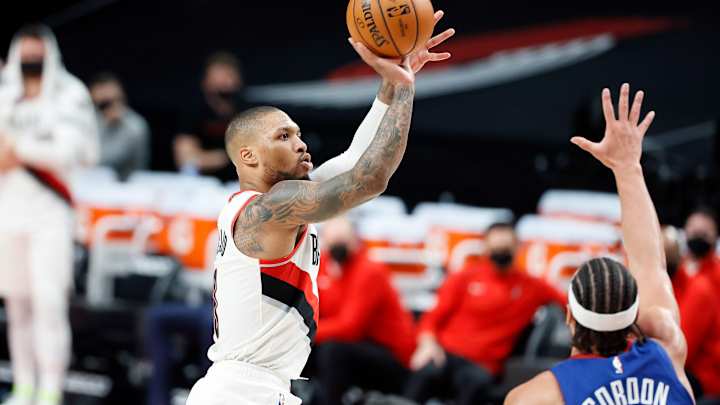Damian Lillard's Role With Team USA Could Mirror His New One in Portland

Ever since the Redeem Team atoned for a series of disappointing, dispiriting finishes by predecessors in international play with a gold medal at the 2008 Olympic Games, Team USA has proudly embraced an all-for-one ethos that often leaves NBA alpha dogs as role players.
There's only one ball to go around, after all, and a basketball team deploying five stars trying to play like it is a recipe for failure—especially against seasoned, cohesive global foes. A pecking order must exist for the Americans to reach their potential.
Damian Lillard understands that reality as well as anyone despite suiting up for his country for the first time. But unlike the vast majority of his All-Star, max-contract teammates with Team USA, Lillard envisions his role—along with Kevin Durant's—at the Tokyo Olympics being similar to the alpha dog one he's long occupied in the league.
"After three games, I feel like my role is gonna be more similar to my role in the NBA than it is not as far as scoring the ball, attacking, being a playmaker," he told Trail Blazers reporter Casey Holdahl. "And the same thing with KD. I could see me and KD having similar roles but not as much pressure to have 30 points, you’ve just got to be aggressive and making plays and kind of getting things going. I could see that. And we’re the longest tenured at doing that."
The Americans are just 1-2 through three exhibition games, beset by inferior conditioning and a lack of experience playing together. Lillard certainly hasn't been his team's problem, though, at least offensively, averaging 16.3 points, four rebounds and three assists on 47.1 percent shooting. Only Durant has scored more points for Team USA than Lillard.
Unsurprisingly, a significant chunk of Lillard's shot attempts has come from the shorter international three-point line. He's 12-of-24 from deep in Team USA's leadup to the Olympics, hot shooting at least partially accounted for by an uptick in spot-up opportunities compared to how many he gets with the Trail Blazers.
"I don’t get catch-and-shoot opportunities [in the NBA]. These three games I’ve probably got more catch-and-shoot opportunities than I got all season this year in the NBA," Lillard said.
"There’s so much talent on the floor. Like, Kevin Durant has the ball, you better help. Brad Beal has the ball, you better help. Zach LaVine has the ball, you better help. You know what I’m saying? Sometimes I catch it and I’m like “Damn, I’m open!” It’s almost like I’m out there like a sniper a little bit."
Lillard shot 45.2 percent on catch-and-shoot threes last season, the 15th-best mark in the league, per NBA.com/stats. But he took nearly four times as many triples off the bounce as he did off the catch, one of the highest discrepancies in basketball.
Could Lillard's share of pull-up versus spot-up three-point attempts even out next season? That's the idea under Chauncey Billups, who's spoken extensively about prioritizing ball and player movement with the Blazers.
Lillard wouldn't be the only Portland sharpshooter to benefit from more catch-and-shoot tries, either. Anfernee Simons and C.J. McCollum, amazingly, were even more accurate on those attempts last season than Lillard.
Even if the Blazers don't make major changes to the roster this summer, they're poised to play a lot more like Team USA in 2021-22 than they have in years past—a development bound to please one of the most overworked primary offensive options in the league.
"I’m playing with the best players [with Team USA]," Lillard said. I"’m not the only player out here that they focus on, that’s why I’m so open, falling into shots and opportunities. It’s fun, that makes it fun."
[Casey Holdahl, Trail Blazers]
